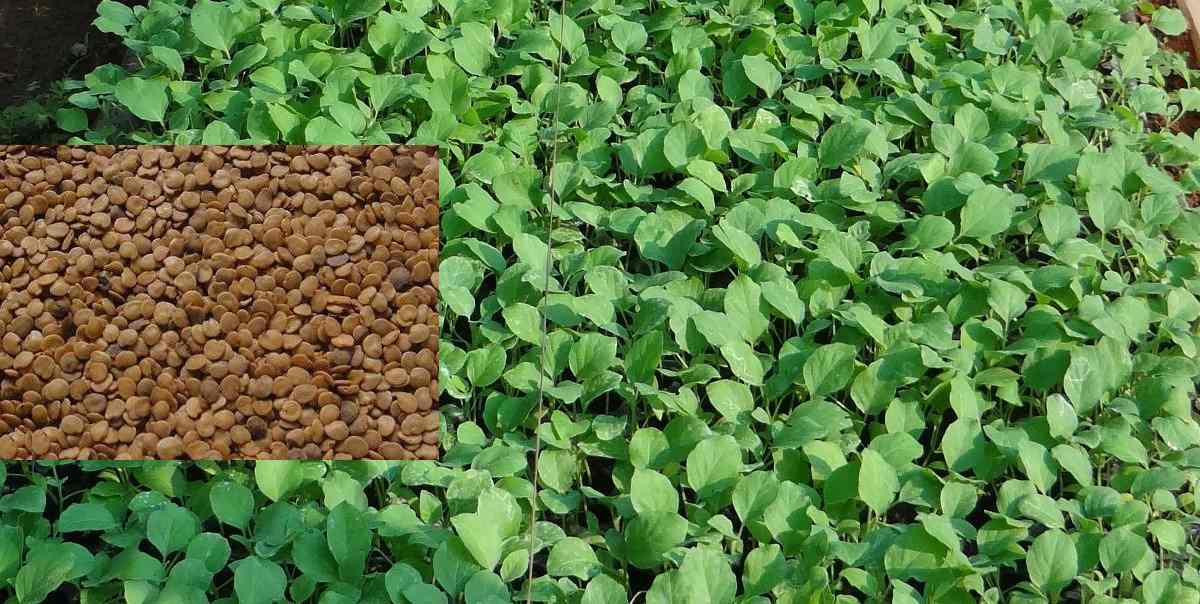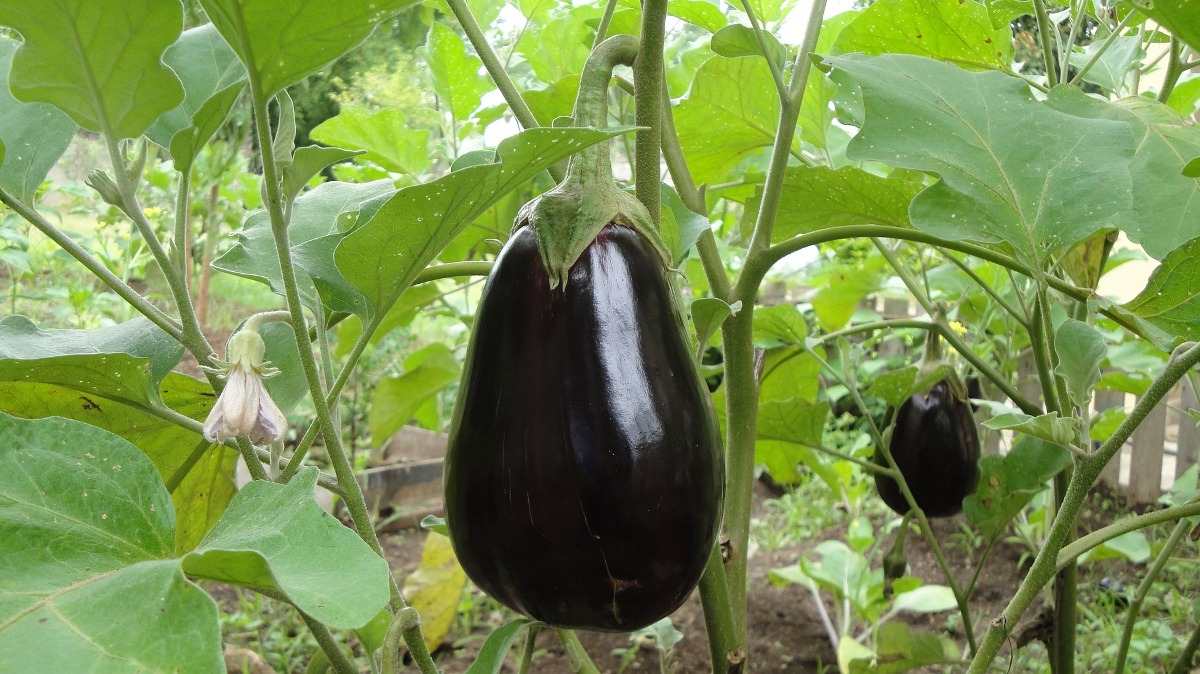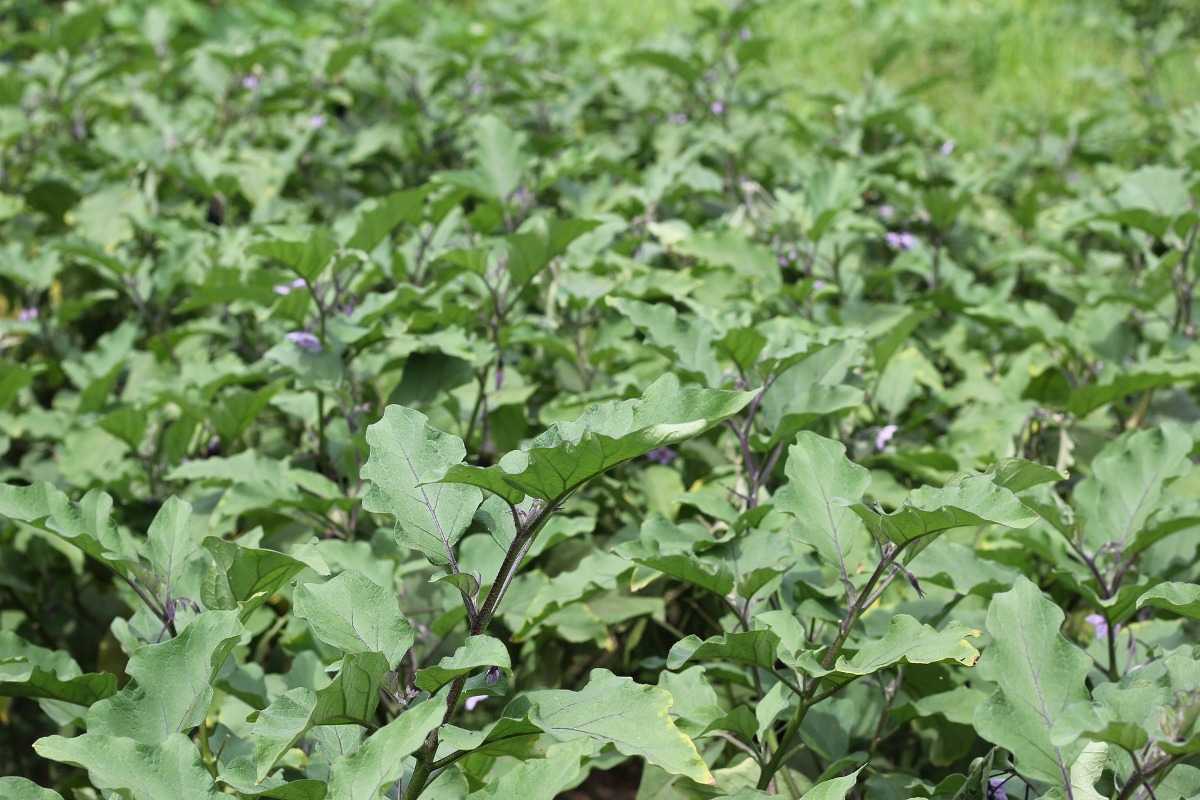Introduction: Hello gardeners today we are here to help you with Eggplant seed germination process and how to grow eggplant (brinjal) from seed. Growing eggplants in the vegetable garden can be so rewarding when the time comes to harvest these tasty, versatile plants. Eggplants also called aubergine or brinjal.
A step by step guide to eggplant seed germination
Eggplants are warm-weather vegetables that are harvested in mid- to late summer. The eggplant is a vegetable of tropical origin. It is rather capricious and wants a lot of heat and sustained fertilization. Though, those conditions can easily be obtained when growing eggplants in containers. In this article we cover the following topics;
- Eggplant seed germination time
- Soil pH for growing eggplant
- Growing eggplant in containers
- Germinating eggplant seeds with a paper towel
- Eggplant germination temperature
- How to get eggplant seeds
- Eggplant growing season
- How long do eggplant plants live
- Eggplant flower to fruit time
- Reasons for eggplant seedlings not growing
- Eggplant Seed Starting Tips
- Spacing for eggplant seeds
- Brinjal Pest Probelms

Soil for growing eggplant from seed
Eggplants are moderately deep rooting and can be produced on a wide range of soils. They do best on light-textured soils, for example, sandy loams or alluvial soils that are deep and free draining. These soils warm up quickly in spring and are suitable for early plantings and avoid soils with high clay content. A soil pH in the range of 6.0 to 7.0 is desirable.
Eggplant varieties
Eggplant varieties changes in size, shape, color, growth habit and even maturation time.
Oval to oblong eggplants produces the large, oval-shaped, purplish-black eggplants seen in supermarkets. Most eggplant varieties produce best in warm climates.
Japanese eggplants mature faster than oval eggplants, producing numerous long and slender fruits.
Small-fruited eggplants are the best type for compact spaces and some varieties produce fruits in attractive clusters which may be green, white, lavender or purple.
Novelty eggplants contain unusual varieties from around the world, such as orange Turkish eggplant, green Thai eggplant, or egg-shaped white eggplant. Whata re we waiting for? Let’s jump into the process of eggplant seed germination to grow eggplants from seed.
You should not miss the How to Protect your Garden from Rats, Mice, Rodents.
Collecting eggplant seeds
Wait until the eggplant is overripe and inedible before you begin collecting eggplant seeds. The eggplant must look dull and off-colored. Overripe purple eggplants turn brown while white and green eggplants take on a yellowish hue. An overripe eggplant is normally hard and shriveled. Slice opens the eggplant and then separates the flesh from the seeds. Put the eggplant seeds in a bowl of water and wash the pulp away. Strain the eggplant seeds, pat them dry and spread them out on a tray to dry not more than two seeds thick.
How to plant eggplant from seed
Eggplants are hot weather vegetables. They grow during short, hot seasons, thus be aware of soil and air temperatures as you plan how and when to get eggplants started;
- If starting from seeds, make sure the soil is between 75 and 85°F (24 to 30°C). Use a heating mat if needed. They will need these warm temperatures and two to three weeks to germinate.
- Start seeds in soil ¼ of an inch (0.6 cm.) deep and thin seedlings so they are 2 to 3 inches (5 to 7.6 cm.) apart.
- Eggplant seeds germinate in 7 to 14 days, mainly depending on the heat, moisture provided, and moisture content and age of the seed. Seedlings with two sets of leaves can be transplanted into 4-inch or 2 x 2 x 6-inch pots 2 to 3 weeks after germination. The bottom heat must be continued until daytime temperatures are in the 70s.
- Eggplant transplants can go out in the garden once temperatures stay reliably above 50°F. (10°C).
- Eggplants require 100 to 120 days to reach maturity from seed, but choosing a faster-maturing eggplant variety and establishing optimal growing conditions can bring fresh, ripe eggplants more quickly from your garden.
- Space transplants in the vegetable garden 18 inches (46 cm.) from each other and rows that are 36 inches (91 cm.) apart.
Starting eggplants indoors
- Start eggplants from seed indoors about 8 weeks before setting seedlings in the vegetable garden.
- Sow seed in individual pots, containers or flats. Sow eggplant seed ¼ to ½ inch deep and spaced 4 to 5 inches apart. Eggplant seeds germinate in 5 to 6 days.
- Give eggplants seedling started indoors 12 hours of light each day; use a grow light or fluorescent lights.
- Start seeds on a heat mat then grow seedlings on at about 70°F
- Transfer seedlings to 4-inch pots when seedlings are 3 to 4 inches tall and then into gallon containers if the weather does not allow transplanting as seedlings produce 5 to 6 inches tall or taller.
- Ahead of seed transplanting, lay black plastic across garden planting beds to pre-warm the soil.
Eggplant care
Grow eggplant in full sun, where other members of the nightshade family, such as tomatoes, peppers or potatoes, have not developed recently. A heavy feeder, eggplant favors rich soil, made porous by adding compost to promote speedy growth and excellent drainage. Although the eggplant plant does not like humidity or wet conditions, keep the soil evenly moist. Temperatures between 75 and 85°F suit eggplant best.

Eggplants do best when the soil is consistent soil moisture and water regularly, especially when the plants are young so that they develop deep roots. Avoid overhead watering to prevent disease, but consider using mulch to maintain the soil moist, warm, and to keep weeds down. Generally, eggplants must get an inch (2.5 cm.) of rain or watering per week.
Container growing eggplants
Eggplants are easily grown in pots or containers. When growing eggplants in containers, the minimum volume must be at least 3 gallons per plant. And, when selecting a container to grow eggplants in, consider one made of wood or fired terra cotta pottery. Unlike plastic containers, these are known to breathe and allow for better oxygenation of the root mass. This is a necessary aspect of plant vitality.
You may also like the How to Grow Leafy Greens in Hydroponics.
Another method to keep pesky flea beetles at bay is to grow eggplant in containers. Compact eggplant varieties work particularly well in pots. Keep your plants on an outdoor table to keep them out of range of ground-dwelling flea beetles. Plants produce best in 16-inch-wide pots or planters and dark-colored pots help accumulate heat in cool climates.
Growing eggplant in containers wants fertilizing as often as needed to maintain steady growth and good leaf color. Plants that want to be watered often need to be fed more frequently. Produce eggplants in pots at least 12 inches across and as deep. Select a smaller growing variety for container growing. Be sure to keep the potting soil just moist through the season and do not let the soil dry out. Feed eggplants in containers every 2 to 3 weeks with compost tea or dilute solution of fish emulsion. Container grown eggplants are simply moved out of cold weather; so you can extend the season in spring and autumn by moving plants indoors when frost threatens.
Sowing eggplant seeds
Sow eggplant seeds in cell packs or small pots for 1/4 inch deep. Water them well, and cover loosely with a plastic bag or a plastic seedling flat cover to retain moisture. And place them in a warm spot and on top of the refrigerator or seedling heat mats would be perfect. Maintain the soil moisture. You must see condensation on the inside of your plastic bag or dome. If you don’t, then it’s time to water with a gentle mist to avoid dislodging the eggplant seeds. The eggplant seeds will germinate without additional heat, but it will take longer. Generally, eggplant seeds germinate in about 7 to 14 days. Once they’ve germinated, remove the plastic cover and put your pot or flat under lights or in a bright window.
Eggplant seed germination with a paper towel
Paper towel germination of eggplant seed
Paper towels, filter paper or even newspaper provides an excellent medium for germinating eggplant seeds. They are pathogen-free and it is easy to control the moisture content for proper germination. This method takes the guesswork out of knowing if your seeds have germinated since you can easily observe them.
To use this paper towel germination method;
- Tear a paper towel in half and moisten one of the halves.
- Place 4 or 5 seeds on half of the paper and then fold the other half over the seeds.
- A blow opens a clear, sandwich size zip-close bag and places the paper with seeds inside and reseals the bag.
- Set the bag anywhere out of direct sunlight that stays at room temperature. The bag acts like a miniature greenhouse that retains heat and moisture. You should observe seeds sprouting in about five to seven days.
- The drawback to the paper towel germination process is that the delicate, sprouted seeds must be transplanted manually to soil or moisture-holding medium such as vermiculite. The major root is very delicate and should not be touched. Use tweezers on the seed body or the cotyledons when moving them to keep moist soil.
- Do not push the eggplant seed into the soil. Instead, create a hole in the soil for the entire root, hold it in place and push soil gently over it. If the eggplant seed is already showing true leaves, make sure those remain above the soil. In a few weeks, the seedlings must be ready for outdoor planting if the weather has warmed up.
Saving eggplant seeds
Eggplants are self-fertile, so saving seeds from open-pollinated varieties is easy provided different varieties are grown at least 50 feet apart. Select a robust plant from near the center of the planting and harvest only the first two fruits. Allow the next two fruits to produce until they become leathery with age and turn a yellowish-brown. Meanwhile, clip off most of the new flowers formed by the plant to direct its energy into the ripening seeds. To remove the ripe seeds, cut off the bottom end of the fruit and pick out the eggplant seeds.
Or, tear the pulp into spongy bits and locate them in a pail of water. Squeeze the pulp like a sponge until the largest seeds drift to the bottom and dry the seeds at room temperature for about two weeks. Under good storage conditions, eggplant seeds will remain viable for 5 years.
Pest problems of Eggplant
Aphids and root node nematodes could each stunt the growth of an eggplant seedling. Small, soft-bodied aphids cluster on the undersides of plant leaves, depositing sticky excrement called honeydew and deforming and discoloring the foliage. The nematodes, microscopic worms, inject toxins and bacteria into the eggplant plant roots. Fortunately, both could be controlled without chemicals. Remove aphids with a blast of water from a hose or mulch around the eggplants with shredded aluminum foil to disorient the insects. Companion planting with marigolds repels root node nematodes and applying fish emulsion around eggplants also counters nematode toxins.
Incase if you miss this: How to Grow Hydroponic Peppers.

Harvest and storage of eggplant
To harvest eggplants, we can use shears or scissors. Try to pull them off, you will most likely damage the plant, the fruit of both. Eggplants don’t keep well and you can store them for about a week in the refrigerator. Pickling is possible, but other preservation methods don’t result in excellent quality. Eggplants are always best eaten fresh and it makes sense to start picking the fruits when they are smaller and immature to extend the harvest period.
Use pruning shears to eggplant harvest with a short stub of stem attached, as the fruits will not pull free by hand. Rinse clean, pat dry, and store in the refrigerator for some days. Eggplant discolors rapidly when cut open, so work quickly when preparing slices for grilling. Marinades that include salt, vinegar, and lemon juice will keep cut pieces from darkening.
Tips for growing eggplant
- Wait for warm weather to set out young eggplants, which will not thrive until soil temperature range rise above 60 degrees.
- Water deeply gives 1 to 2 inches of water per week after plants are producing fruit. Allow the soil to dry slightly between watering to discourage verticillium wilt.
- Midseason fertilization keeps eggplant productive until cool fall weather stops the plant growth.
- Eggplant wants no pruning beyond removing old, withered leaves. As the plants grow tall, numerous side shoots will form along the plant’s major stem. These side shoots will bear flowers and also fruits later in the season. In long-season regions, eggplants could be topped back by half their size in midsummer to stimulate the growth of new fruit-bearing branches.
- Temperatures below 40°F stop eggplant growth. Wait until the air temperature remains above 65°F before setting out plants. If the temperature dips after eggplant planting, protect the seedlings by covering them with plastic jugs with the bottoms cut out. Lightweight fabric row covers can be used when cold spells come, however, open the row cover ends on warm days to allow pollinating bees to reach the flowers.
That’s all folks about the process of eggplant seed germination to grow brinjal or eggplant from seeds. You may be interested in Growing Leafy Vegetables in Pots.